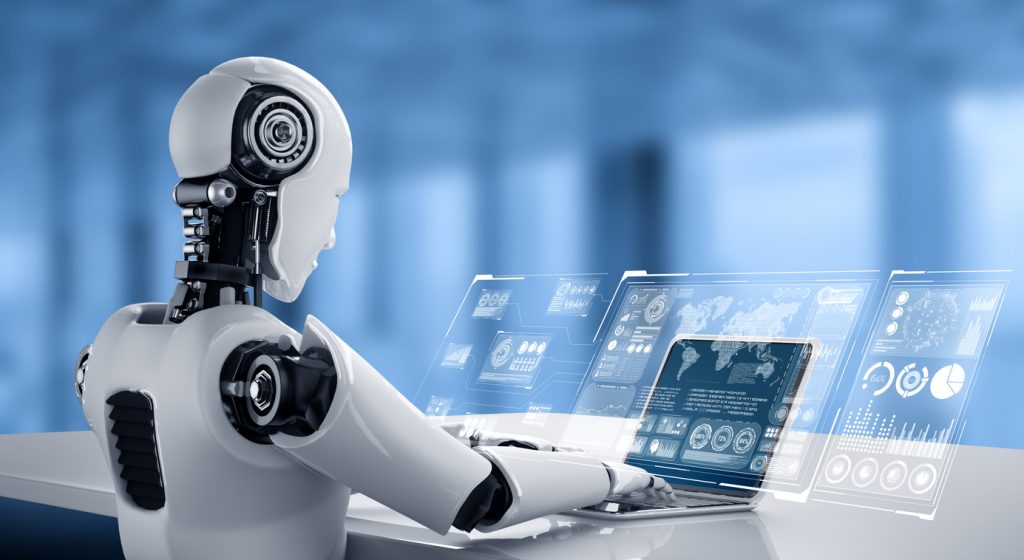Artificial Intelligence (AI) has become an integral part of our daily lives. From powering our smart devices to enhancing business processes, AI is transforming various aspects of modern existence. At the heart of AI are algorithms—step-by-step procedures or formulas that enable machines to learn, make decisions, and solve problems. Understanding how these algorithms work and their significance is crucial for grasping the impact of AI on society.
What Are AI Algorithms?
AI algorithms are sets of rules and computations that allow machines to process information, learn from data, and make predictions or decisions. Unlike traditional algorithms, which follow a fixed set of instructions, AI algorithms are designed to improve their performance over time by learning from past data. This ability to learn and adapt makes AI algorithms uniquely powerful.
These algorithms range from simple decision trees to complex neural networks. Each type serves a specific purpose, such as recognizing patterns, optimizing processes, or predicting outcomes. Understanding these algorithms requires a look at some of the most common types used in AI today.
You may also read AI, Surveillance, and Data Collection.
Types of AI Algorithms
1. Supervised Learning Algorithms
Supervised learning algorithms are among the most widely used in AI. They rely on labeled data to learn relationships between input and output. The goal is to predict the output for new, unseen inputs based on the patterns learned from the training data.
- Linear Regression: This algorithm is used for predicting a numerical value based on the relationship between two variables. For example, predicting house prices based on square footage.
- Logistic Regression: Despite its name, logistic regression is used for classification tasks. It helps determine which category an input belongs to, such as spam or not spam in email filtering.
- Support Vector Machines (SVM): SVM is another classification algorithm that finds the best boundary (or hyperplane) between different classes in a dataset.
- Neural Networks: Inspired by the human brain, neural networks are designed to recognize patterns in complex data. They are particularly useful for image and speech recognition tasks.
2. Unsupervised Learning Algorithms
Unsupervised learning algorithms do not rely on labeled data. Instead, they try to find hidden patterns or structures within the data. These algorithms are especially useful when dealing with large datasets where the structure is unknown.
- K-Means Clustering: This algorithm partitions the data into groups (clusters) based on similarity. It’s commonly used in market segmentation, image compression, and anomaly detection.
- Principal Component Analysis (PCA): PCA is used to reduce the dimensionality of large datasets while preserving the most important information. It helps in visualizing high-dimensional data and improving computational efficiency.
- Association Rules: These rules are used for discovering interesting relationships between variables in large databases. Market basket analysis, which finds patterns in customer purchases, is a classic example.
3. Reinforcement Learning Algorithms
Reinforcement learning algorithms are designed to make sequences of decisions by learning from interaction with an environment. These algorithms are particularly effective in situations where decisions must be made in real-time, such as in robotics or game playing.
- Q-Learning: A model-free algorithm that learns the value of actions in given states to maximize the cumulative reward. It’s commonly used in gaming, where an AI agent learns to achieve the highest score.
- Deep Q-Networks (DQN): A combination of deep learning and Q-learning, DQN is used for more complex environments where the state-action space is large, such as in self-driving cars.
- Monte Carlo Methods: These methods are used for situations where it’s difficult to calculate exact probabilities. They rely on random sampling to make decisions, often used in financial modeling and risk assessment.
How AI Algorithms Learn
AI algorithms learn in different ways depending on the type and complexity of the task at hand. Here are some common methods:
1. Gradient Descent
Gradient descent is an optimization algorithm used to minimize the error in machine learning models. The algorithm iteratively adjusts the model’s parameters to find the point where the error is lowest. It’s like finding the bottom of a valley by taking small steps in the steepest downward direction.
2. Backpropagation
Backpropagation is primarily used in neural networks. It involves propagating the error backward through the network to update the weights and minimize the error. This process is repeated multiple times, allowing the network to learn complex patterns in the data.
3. Genetic Algorithms
Inspired by natural evolution, genetic algorithms use techniques such as selection, crossover, and mutation to optimize solutions to problems. They are particularly useful in scenarios where the search space is vast, such as in scheduling or designing complex systems.

Why AI Algorithms Matter
1. Improving Decision-Making
AI algorithms enhance decision-making processes by analyzing vast amounts of data more quickly and accurately than humans can. For example, in healthcare, algorithms assist in diagnosing diseases, recommending treatments, and predicting patient outcomes. In finance, they help in detecting fraudulent transactions and managing risks.
2. Enhancing Personalization
Personalization has become a cornerstone of modern consumer experiences. AI algorithms analyze user behavior, preferences, and past interactions to provide personalized recommendations, such as in online shopping or content streaming services.
3. Optimizing Operations
AI algorithms help businesses optimize their operations by automating repetitive tasks, reducing costs, and improving efficiency. For example, supply chain management systems use AI to predict demand, manage inventory, and reduce waste.
4. Enabling New Technologies
AI algorithms are foundational to new and emerging technologies. Autonomous vehicles, smart assistants, and IoT devices all rely on these algorithms to function. As AI continues to evolve, so will the capabilities of these technologies.
Challenges and Limitations of AI Algorithms
1. Data Dependency
AI algorithms are highly dependent on data. The quality and quantity of data directly impact the performance of these algorithms. Inadequate or biased data can lead to inaccurate predictions and decisions.
2. Computational Complexity
Some AI algorithms, particularly deep learning models, require significant computational resources. This can make them difficult to deploy in real-world applications where resources are limited.
3. Interpretability
Many AI algorithms, especially neural networks, are often described as “black boxes.” This means that while they may provide accurate results, it is difficult to understand how they arrived at those results. This lack of interpretability can be a barrier in fields where explainability is crucial, such as healthcare or finance.
4. Ethical Concerns
AI algorithms can perpetuate biases present in the data they are trained on. Ensuring fairness and transparency in AI decision-making is an ongoing challenge. Additionally, there are concerns about privacy, security, and the potential misuse of AI.
Future Trends in AI Algorithms
1. Explainable AI (XAI)
The demand for explainable AI is growing as organizations seek to understand and trust AI systems. XAI focuses on creating models that provide not only accurate predictions but also understandable reasons for those predictions.
2. Federated Learning
Federated learning is an approach where AI algorithms learn across multiple decentralized devices without sharing data. This method is gaining traction in scenarios where privacy is paramount, such as in healthcare and finance.
3. Quantum Machine Learning
Quantum computing has the potential to revolutionize AI algorithms by enabling them to solve complex problems faster than classical computers. Quantum machine learning is an emerging field that explores the intersection of quantum computing and AI.
4. Automated Machine Learning (AutoML)
AutoML aims to automate the process of applying machine learning to real-world problems. This includes automating tasks such as data preprocessing, feature selection, and model selection. AutoML is democratizing AI by making it more accessible to non-experts.
Conclusion
Understanding AI algorithms is essential to grasp the broader implications of AI on society and technology. These algorithms are the building blocks that empower machines to learn, adapt, and make decisions, influencing everything from daily conveniences to groundbreaking advancements. As AI continues to advance, the role of these algorithms will only become more significant. They not only drive innovation but also present new challenges and opportunities that must be navigated carefully to ensure a future where AI benefits all of humanity.

